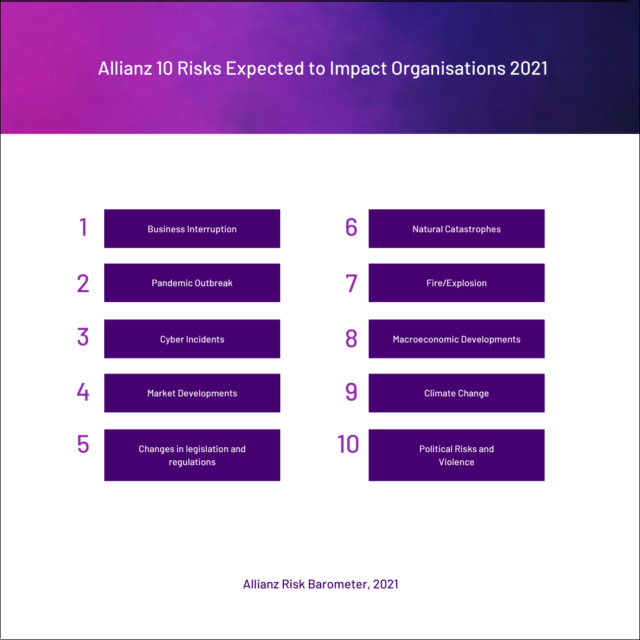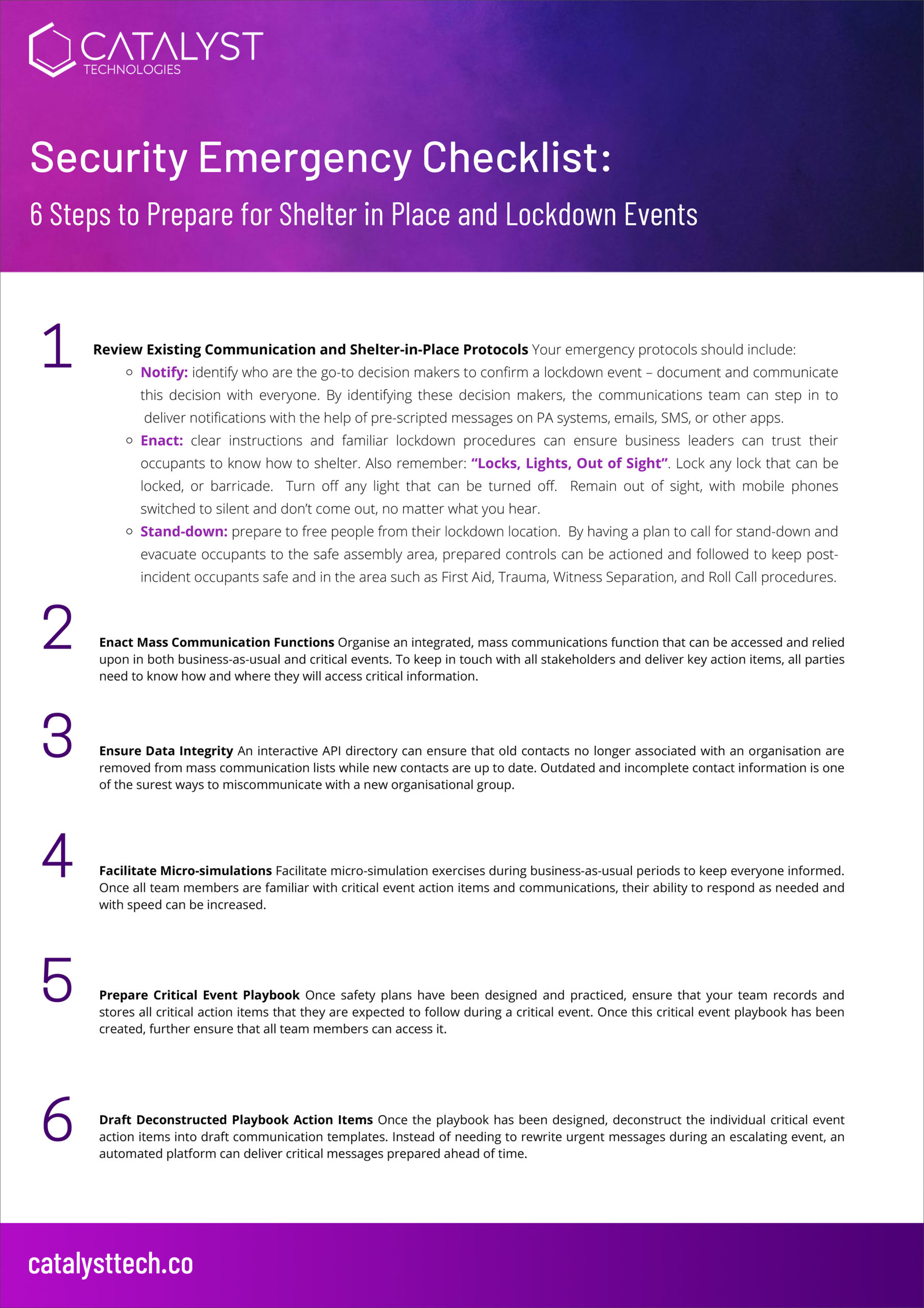 As COVID-19 rages on, the effects of healthcare, education, and economic inequalities are becoming clearer. Ranked the 10th most pressing threat to potentially impact corporations over the next year, the Allianz Risk Barometer 2021 saw increased expectations of violence and physical threats.
As COVID-19 rages on, the effects of healthcare, education, and economic inequalities are becoming clearer. Ranked the 10th most pressing threat to potentially impact corporations over the next year, the Allianz Risk Barometer 2021 saw increased expectations of violence and physical threats.
With employment crises, a breakdown of social cohesion, and terrorist attacks considered highly likely critical events to unfold over the next two years, Security Managers need to be prepared to action effective safety responses in a rapidly evolving threat landscape.
In the face of an escalating physical threat, every minute counts. To assist Security Managers make the most of that finite time, we’ve brought together six key considerations to modernize an effective response and help protect your people against an impending threat.
6 Step Checklist: How To Prepare a Security Emergency Plan for Shelter-in-Place and Lockdown Events
1. Review Existing Communication and Shelter-in-Place Protocols
Ask and consider: “do we have an existing security procedure and, if so, is it simple?”
The simpler the procedure, the more likely it is to work in an emergency. Rowan Allsop, Emergency Management Innovator with Lungela Pty. Ltd, recommends breaking down security protocols into a 3-step plan:
Step 1: Notify: Starting with identifying who are the go-to decision makers to confirm a lockdown event – document and communicate this decision so that everyone knows where to go in an emergency. By identifying these decision makers ahead of potential events, the communications team can take over notification delivery and notify all occupants of a stay-in-place event.
The next priority is to develop pre-scripted messages for use on PA systems, emails, SMS, or other in-house communication apps.
Step 2: Enact: your prepared action items to have everyone carry out a safe lockdown. Clear instructions and familiar lockdown procedures practiced through routine microsimulations can ensure business leaders can trust their occupants to know how to shelter.
Additional actions to consider would include “Locks, Lights, Out of Sight”. This saying reminds people to lock any lock that can be locked, turn off any lights, and remain out of sight. Additional considerations include barricading any entry ways that can’t be locked, turning mobile phones on silent, and staying in place – no matter what you hear.
Step 3: Stand-down: prepare to free people from their lockdown location by ensuring there is a clear method to communicate stand-down or all clear.
By having a plan to call for stand-down and evacuate occupants to the safe assembly area, prepared controls can be actioned to keep post-incident occupants safe and in the area.
With any lockdown or on-site critical event, First Aid, Trauma, Witness Separation, and Roll Call procedures should be available to support ongoing crisis mitigation.
2. Enact Mass Communication Functions
Instead of waiting for a critical event to communicate with all team members, organize an integrated, mass communications function that can be accessed and relied upon in both business-as-usual and critical events. To keep in touch with all stakeholders and deliver key action items, all parties need to know how and where they will access critical information to stay informed.
3. Ensure Data Integrity
A key component to maintaining the integrity and usefulness of a mass communications system is to ensure data integrity. An interactive API directory can ensure that old contacts no longer associated with an organization are removed from mass communication lists while new contacts are up to date. Outdated and incomplete contact information is one of the surest ways to miscommunicate with a new organizational group. Because of this – don’t leave it to chance and ensure your database is connected via API.
4. Facilitate Micro-simulations
Instead of hoping your team can quickly respond during a critical event, facilitate micro-simulation exercises during business-as-usual periods to keep everyone informed. Once all team members are familiar with the key critical event action items and communication platform, their ability to respond as needed and with speed and be increased during a critical event.
5. Prepare Critical Event Playbook
Once safety plans have been designed and practiced, ensure that your team records and stores all critical action items that they are expected to follow during a critical event. Once this critical event playbook has been created, further ensure that all team members who completed the microsimulation training can access it—regardless of their location—during a critical event.
6. Draft Deconstructed Playbook Action Items
Once the playbook has been designed, deconstruct the individual critical event action items into draft communication templates. Instead of needing to rewrite urgent messages during an escalating event, an automated and integrated communication platform can deliver critical messages prepared ahead of time with the clock of a button.
Download your free checklist—
Knowing that the best way to keep people safe during a physical threat is through consistent training, familiarization, and communication, ensure that your team has the components of a strong security emergency preparedness program in place today.
With the Global Risks Report 2021 showing increased expectations of civil unrest and a breakdown in social cohesion due to economic and social inequalities, securing your organization against potential physical threats can save time and lives. Instead of waiting for the next big event to prepare your team for a crisis, plan and exercise the critical components needed to navigate an emergency event.
With innovative technology and critical event management systems available to support background monitoring, data feeds, and mass communications, digital platforms like CQ and iluminr have never been more accessible or easier to use.
If you’re interested in levelling up your security emergency preparedness plan, click here to download the Catalyst Technologies’ 6 Step Checklist for Security Emergency to digital your security threat response and help save lives today.
—
References















